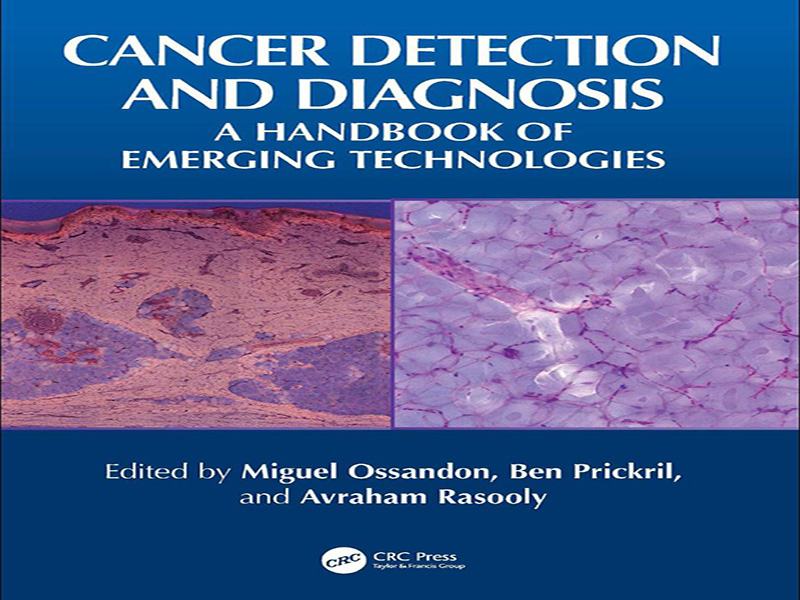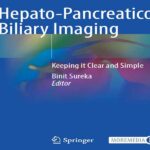- عنوان کتاب: Cancer Detection and Diagnosis -A Handbook of Emerging Technologies
- نویسنده: Miguel Ossandon
- حوزه: تشخیص سرطان
- سال انتشار: 2025
- تعداد صفحه: 580
- زبان اصلی: انگلیسی
- نوع فایل: pdf
- حجم فایل: 22.9 مگابایت
این دومین ویرایش از کتاب «حسگرهای زیستی و فناوریهای مولکولی برای تشخیص سرطان» است که در ابتدا در سال ۲۰۱۲ توسط انتشارات CRC منتشر شد. از زمان ویرایش اول، بسیاری از فناوریهای جدید سرطان توسعه یافتهاند که برای گسترش دامنه کتاب فراتر از حسگرهای زیستی در کتاب گنجانده شدهاند. این ویرایش دوم با عنوان «تشخیص و شناسایی سرطان: کتابچه راهنمای فناوریهای نوظهور» منتشر شده است. سرطان یک نگرانی عمده در حوزه سلامت جهانی است. در سال ۲۰۲۲، تقریباً ۲۰ میلیون مورد جدید سرطان و ۹.۷ میلیون مرگ ناشی از سرطان در سراسر جهان وجود داشت. تشخیص زودهنگام سرطان و تشخیصهای دقیق برای درمان مؤثر ضروری است و پرداختن به چالشهای سرطان نیازمند بهبود تشخیص و شناسایی سرطان است، نیازی که به خوبی شناخته شده است. تحقیقات در مورد فناوریهای جدید سرطان در سالهای اخیر گسترش یافته است و بسیاری از فناوریهای جدید در نشریات مختلف منتشر شدهاند که کاربردهای جدید زیستپزشکی و تحلیلی را برای تشخیص و شناسایی سرطان توصیف میکنند. با این حال، علیرغم پتانسیل آنها، بسیاری از این فناوریها امروزه در محیطهای بالینی سرطان وجود ندارند. برای حمایت از توسعه فناوریهای سرطان، این کتاب رویکردهای تجربی جدید و کاربردهای بالقوه آنها را در تشخیص، تشخیص و درمان سرطان شرح میدهد که ممکن است به تسهیل استفاده و ادغام آنها در اقدامات پزشکی آینده کمک کند. شش رویکرد تحلیلی مهندسی زیستی در این کتاب شرح داده شده است: (۱) نوری، (۲) تصویربرداری، (۳) اسید نوکلئیک، (۴) نشانگر زیستی و مولکولی، (۵) اندامک و سلولی، و (۶) فناوریهای محاسباتی/دیجیتال. برخی از خوانندگان بالقوه این کتاب فناوریمحور ممکن است با چالشها و پیچیدگیهای سرطان یا اصطلاحات مورد استفاده در کتاب چندان آشنا نباشند؛ برای این خوانندگان، بخشی در مورد عناصر اساسی سرطان گنجاندهایم. این کتاب به گونهای طراحی شده است که این فناوریها را برای زیستشناسان مولکولی، انکولوژیستها، آسیبشناسان، مهندسان و دانشجویان قابل دسترستر و قابل فهمتر کند. توسعه بسیاری از فناوریهای شرح داده شده در این کتاب توسط موسسه ملی سرطان ایالات متحده (NCI) پشتیبانی شده است. امیدواریم این کتاب با ارائه اطلاعات فنی مختصر و دقیق در مورد این فناوریها، که ممکن است به ارائه فناوریهای جدید زیستپزشکی به بیماران سرطانی کمک کند، به پر کردن شکاف بین فناوریهای نوظهور سرطان و تحقیقات پایه و بالینی سرطان کمک کند.
This is the second edition of Biosensors and Molecular Technologies for Cancer Diagnosis, initially published in 2012 by CRC Press. Since the first edition, many new cancer technologies have been developed, which have been included to broaden the book’s scope beyond biosensors. This second edition is entitled Cancer Detection and Diagnosis: A Handbook of Emerging Technologies. Cancer is a major global health concern. In 2022, there were approximately 20 million new cancer cases and 9.7 million cancer-related deaths worldwide. Early cancer detection and accurate diagnoses are essential for effective treatment, and addressing cancer challenges requires improving cancer detection and diagnosis, a need that is a well-recognized imperative. Research on new cancer technologies has expanded in recent years, and many new technologies have been published in various publications, describing novel biomedical and analytical applications for cancer detection and diagnosis. However, despite their potential, many of these technologies are absent today in clinical cancer settings. To support the development of cancer technologies, this book describes novel experimental approaches and their potential applications to cancer detection, diagnosis, and treatment, which may help to facilitate their utilization and integration into future medical practice. Six bioengineering analytical approaches are described in this book: (i) Optical, (ii) imaging, (iii) nucleic acid, (iv) biomarker and molecular, (v) organelle and cellular, and (vi) computational/digital technologies. Some potential readers of this technology-oriented book may not be very familiar with cancer challenges and complexities, or the terminology used in the book; for these readers we included a section on the basic elements of cancer. The book is designed to make these technologies more accessible and understandable to molecular biologists, oncologists, pathologists, engineers, and students. The development of many of the technologies described in this book was supported by the US National Cancer Institute (NCI). We hope the book will help bridge the gap between emerging cancer technologies and basic and clinical cancer research by providing concise and detailed technical information on these technologies, which may help to bring new biomedical technologies to cancer patients.
این کتاب را میتوانید از لینک زیر بصورت رایگان دانلود کنید:
Download: Cancer Detection and Diagnosis



































نظرات کاربران